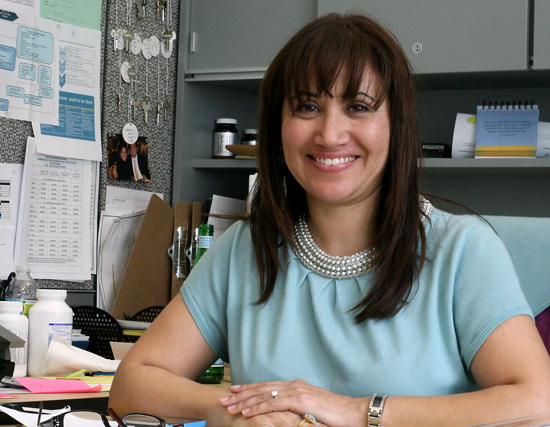From the futuristic architecture to the colorful classrooms decorated with student projects written in both Spanish and English, it is clear that the UCLA Community School is not an average L.A. public school.
After walking through the classrooms, this becomes even more evident ““ in one, a teacher reads a story in Spanish to a group of elementary students, while an English-language poem hangs behind her on the wall.
This integration of both Spanish and English at the elementary level marks a bilingual approach to education that stands in direct contrast to the traditional practices of L.A. public schools. Conventionally, L.A. Unified School District bilingual education programs attempt to transition students out of their native language and into English, according to Karen Quartz, director of research and development at the community school.
At the UCLA Community School, however, administrators opted to enact a dual-language focus ““ celebrating students’ diverse cultures and languages.
“Our philosophy at the UCLA Community School is that language and culture go hand in hand and you can’t separate either of those in the instructional setting,” said Principal Georgia Ann Lazo.
While the school offers only a Spanish program this year, it will expand next year to include Korean, because of the sizeable Korean population at the school.
The community school, which opened last September through a partnership between UCLA and the L.A. Unified School District, currently serves about 340 students, from kindergarten through fifth grade, Lazo said.
The innovative pilot school is located in the Pico-Union and Koreatown neighborhood of L.A., on the site of the former Ambassador Hotel, where the late Robert F. Kennedy was assassinated in 1968.
As a pilot school, administrators have charter-like autonomy over staffing, curriculum, budget and government, said Lazo, who grew up in the Pico-Union area.
However, unlike a charter school, the UCLA Community School is not selective in admissions, and all students from the local community have the opportunity to attend the school.
“The students at our school feed in from neighboring schools, so it is a neighborhood school that students can walk to,” Lazo said. “The idea behind opening this complex was to relieve overcrowding from neighboring schools.”
The school was also established to provide students of the underrepresented and predominantly Hispanic neighborhood with the highest quality of education, Lazo said.
“Our philosophy is social justice, and we aim to serve the historically underserved children and families who need it the most,” Lazo said.
While the focus on bilingual education sets it apart from neighboring public schools, other elements, including the community-oriented layout of the campus, also serve to distinguish the school from its LAUSD counterparts.
The Robert F. Kennedy complex upon which the school is located has several soccer fields, a pool and a central location that is accessible to students and the community, Lazo said.
“The beautiful campus and architecture gives us an opportunity to instill a sense of pride in the school and who we are as members of this community,” said Mario Perez, one of the lead teachers at the school.
Additionally, the community school has a fruitful and symbiotic relationship with UCLA through various programs linking the two schools.
From the outset, UCLA has been influential in the overall vision of the school, as a UCLA team wrote the original pilot school proposal and has worked on the design every step of the way, according to Quartz.
Also, a large majority of the teachers, about 80 percent, are graduates of the UCLA Teacher Education Program, a two-year program within UCLA’s Center X that is focused on social justice.
“There is currently a lack of jobs in LAUSD, so this school provides these students with valuable teaching experience,” Perez said.
This year, the UCLA School of the Arts and Architecture instituted an arts program at the school, providing salsa dance lessons and taking the students on field trips to see dance performances.
Thus, the UCLA-based program provided an arts education that the school wouldn’t have been able to afford otherwise, given the condition of the state budget, Lazo added.
In addition, the UCLA Graduate School of Education and Information Studies researches the effectiveness of the school’s teaching techniques, while UCLA’s BruinCorps program allows dozens of undergraduate students to work as tutors, teaching assistants and interns, according to the school’s brochure.
With its pioneering teaching methods and the strong partnership with both UCLA and LAUSD, the UCLA Community School is on the “cutting edge” of elementary education, said Io McNaughton, another lead teacher.
And according to Principal Lazo, the community school will become one in which “all the graduates will be able to meet the entry requirements for any four-year university.”
